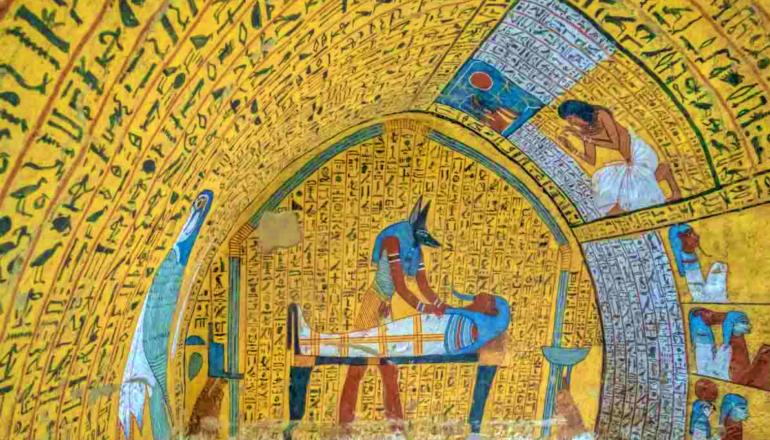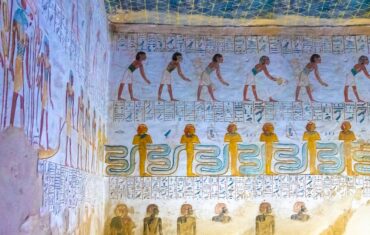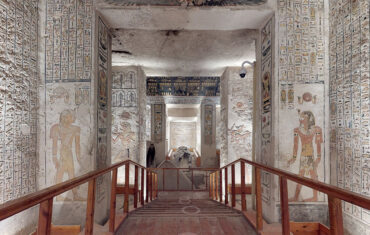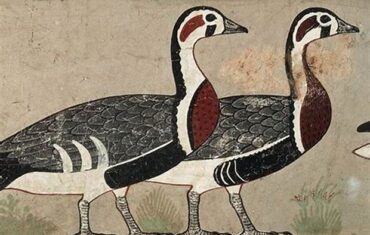The village of Deir el-Medina, called by the inhabitants Pa-demi, “the city”, was founded at the beginning of the New Kingdom under Thutmose I, the first ruler buried in the Valley of the Kings. Here lived the workers, artisans, and artists who worked on the construction and decoration of the tombs of royalty and their families. The site was certainly chosen for its strategic position, being isolated but at the same time central to the worksites: the Valley of the Kings, located to the north, is about twenty minutes on foot, and the Valley of the Queens, south of the village, it was reachable in just ten minutes. During the reign of Thutmose I, the village, surrounded by an unbaked brick wall six or seven meters high, contained 20 houses with identical plans and lined up along the central street that connected the two entrances to the village from north to south. Under Thutmose III about a dozen houses were added.
In the Amarnian era, the village was abandoned, the inhabitants followed the pharaoh Akhenaten going to live in a similar village near Tell el-Amarna in Middle Egypt.
With the nineteenth dynasty, Deir el-Medina experienced a revival of vitality, and the village was enlarged with a new neighborhood. A 20th dynasty census lists a total of 120 hearths, about 1200 people. When at the end of the Ramesside era the kings abandoned the Valley of the Kings as their necropolis, the village also depopulated, and the inhabitants moved to nearby Medinet Habu.
The settlement, which covers an area of about 5600 square meters, was surrounded by a wall with two doors, one on the north side, the main entrance, and one on the south. Inside, the village was divided into two districts by a road running from north to south, while two smaller crossroads are connecting the east to the west side. 68 houses were found where the workers lived with their families. Called the ” Tomb Squad “, the community that lived in the village was a subdivision of a larger institution called ” The Tomb “. It was created to ensure the protection and proper functioning of the royal and princely necropolis on the west bank of Thebes. The vizier of Upper Egypt, who directed the institution on behalf of the king, assigned the work to be carried out to the team and supervised their execution; he also had to take care of the workers’ supplies and their well-being. All the administrative, community, and religious life of the village took place in the northern part of the surrounding wall. Here there were votive chapels built by the workers themselves gathered in brotherhoods, where they gathered and honored their divinities. Also, in the northern part of the village, there was a building called the “checkpoint of the Tomb”; here the workers received supplies, service orders, and once a month a salary in cereals with which they could make bread and beer, the basic elements of their diet. The Tomb team generally consisted of 40 to 60 individuals, but the number varied from kingdom to kingdom. They were divided into two groups, the “right” and the “left ”each of which worked on one of the two halves of the royal tomb that had to be excavated and decorated. Each of the two groups had a foreman assisted by a substitute; a common scribe, present on the construction site, had the important task of keeping an administrative journal in which he recorded the most relevant facts on a daily basis: work progress, absence of workers, supplies, etc. The work was carried out throughout the year, and every eight working days there were two rest days. During these two days, the workers could devote themselves to the construction of their tomb, pray in the chapels of the brotherhoods or participate in religious processions.





